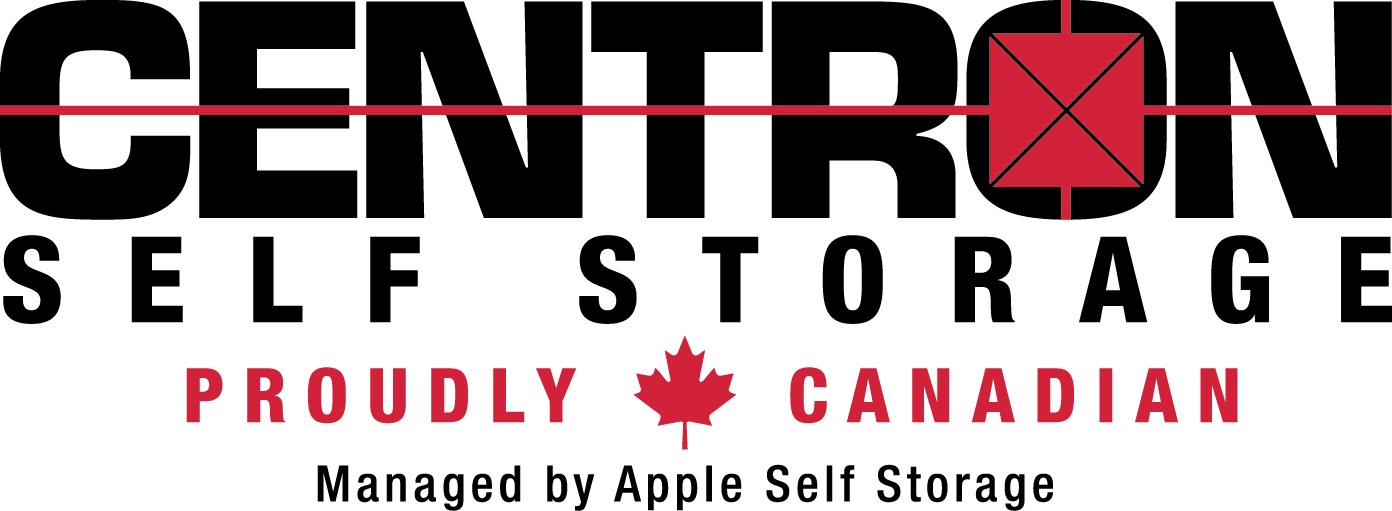Helpful Tips for Storing Tires
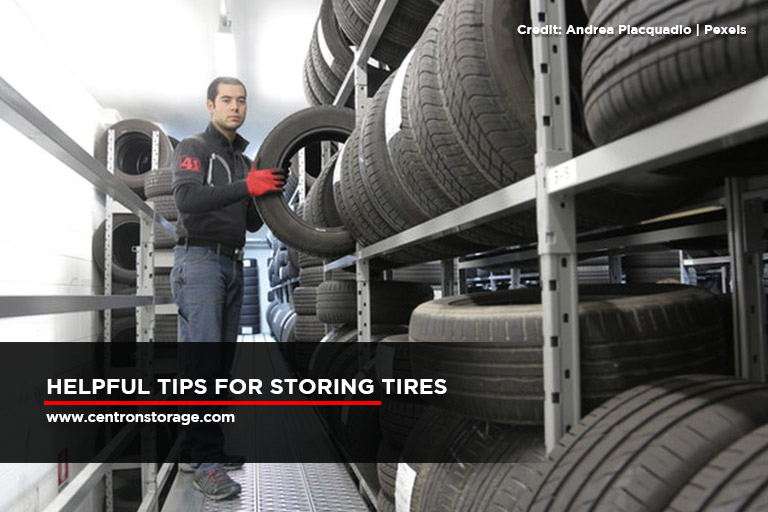
Due to their size and the extra procedures required to keep them in good shape, storing tires may be a stressful chore. But, sometimes, you may not have any choice. When seasons change, for example, storing summer tires in winter and winter tires come summer is a must. Because temperature and exposure to the elements are the two most critical factors that affect the condition of a tire, it’s important to consider how to store your tires during the off-season.
All tires will inevitably deteriorate, but some things could be done to slow down the process. If you don’t know where to begin, you’re not alone. Here are some tire storage tips, so you can get the most out of your tires:
- Remove tires from vehicles
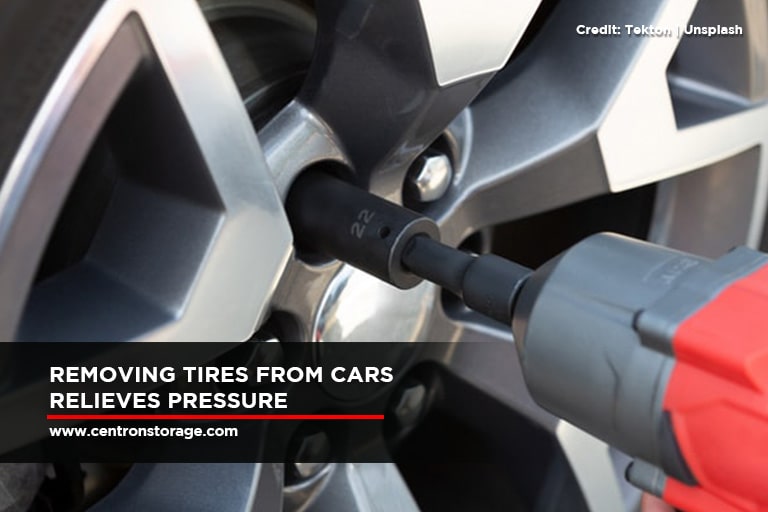
If you’re storing a car for more than a few months, take your tires off the car if at all possible to ensure long-term care in storage. Flat-spotting can occur if the tires are left on the car for longer periods. Removing the tires also allows you to maximize the storage conditions for your tires while also eliminating common causes of strains such as vehicle weight, temperature fluctuations, and so on.
When you are unable to remove the tires from the vehicle for storage, you must take particular precautions to ensure that the tires are correctly stored. It’s best to start by removing the weight from the tires by mounting the vehicle on jack stands or other load-bearing equipment. If you can’t remove the weight from the tires, it’s best to leave the car fully empty so that just the bare minimum pressure is placed on the tires. Make sure to take the automobile for a ride every few months at the very least to keep the tires in good shape. Tires perform best in service because motion distributes oil uniformly throughout the rubber, preventing it from drying out.
- Clean your tires before storage
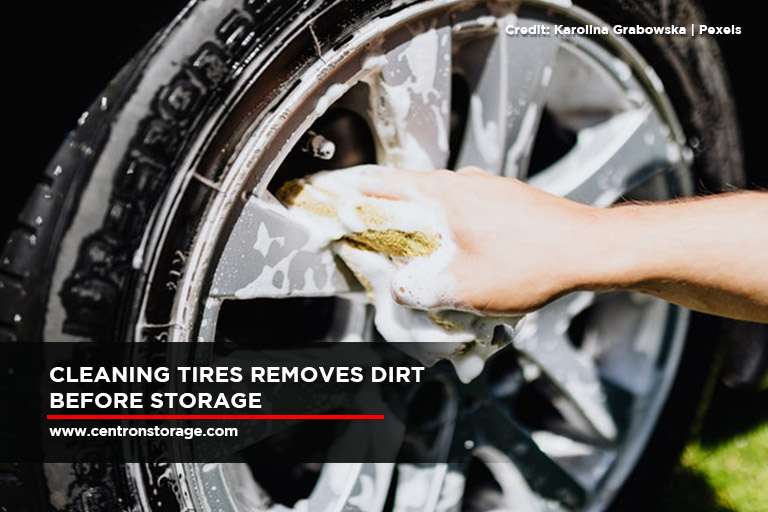
Clean your summer tires after they’ve been swapped for winter tires or vice versa. To remove road filth, dirt, and brake dust, clean them with a tire brush, soap, and water. Now is also an excellent time to look for indicators of wear on your tires, such as cracks, bulges, and uneven tread wear.
Tire dressing is not necessary. Tire compounds are designed to withstand ozone cracking and other environmental factors. Such products can actually shorten the life of your tires rather than help them last longer.
- Avoid the sun
Some argue that ultraviolet radiation is the most significant cause of tire aging. UV radiation and the heat from the sun are harmful to rubber and cause it to deteriorate prematurely. UV rays enter the rubber, causing it to dry up and eventually degrade the rubber compounds. The simplest strategy to avoid dry rot in tires is to keep them out of the sun as much as possible. - Cover each tire
Place each one in a large, airtight plastic bag, such as lawn and garden bags. Make sure the bag and the tire are both dry and then remove as much air as possible from the bag (you can use a vacuum cleaner to suck out as much as possible). Tape the bag shut and close it tightly. This airtight environment reduces oil evaporation from rubber compounds.
There are also tire storage caddies or tire totes available. These make it easier to transport and store tires while also keeping them clean and dust-free. They are not, however, airtight. If you choose to use them, bag the tires first before putting them in your tire tote.
- Store tires in a cool, dry environment
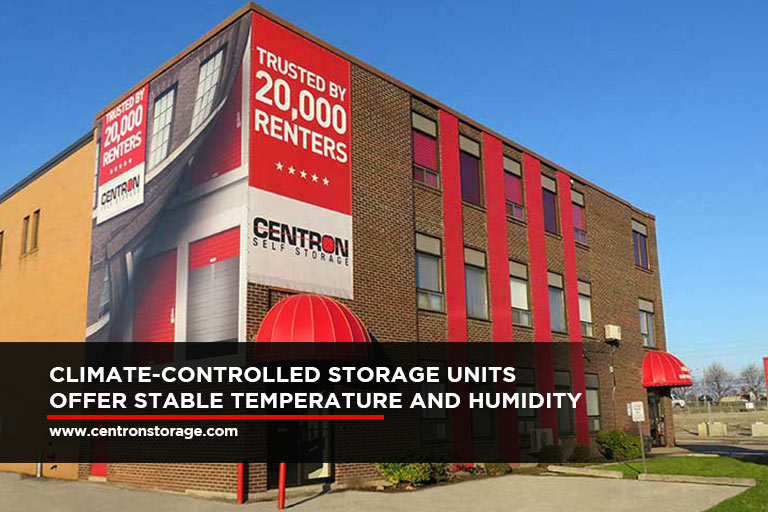
The most ideal tire storage conditions are cool and dry, with consistent temperature and humidity levels.
If at all possible, avoid keeping your tires outside or in a garage. These places are prone to sunlight and weather exposures. Another common option is the basement. If you’re storing your tires there, just make sure that they are kept away from furnaces, water tanks, sump pumps, and other ozone-producing machines. To keep a consistent atmosphere, consider renting a climate-controlled storage facility.
- Protect white rubber
Do your tires have whitewalls or other white components (such as lettering)? If you don’t want to bag your tires, store them with the white parts touching white and the black parts touching black.
On the white side, the black rubber is compounded differently than the black rubber on the other side. The white rubber on the tire’s white side is covered with a layer of non-staining black rubber to prevent oils in the tire from flowing into the exposed white rubber and discolouring it; however, the black sidewall is made of ordinary rubber. To keep white rubber bright and avoid blemishes, store it black-to-black and white-to-white.
- Avoid harmful products and chemicals
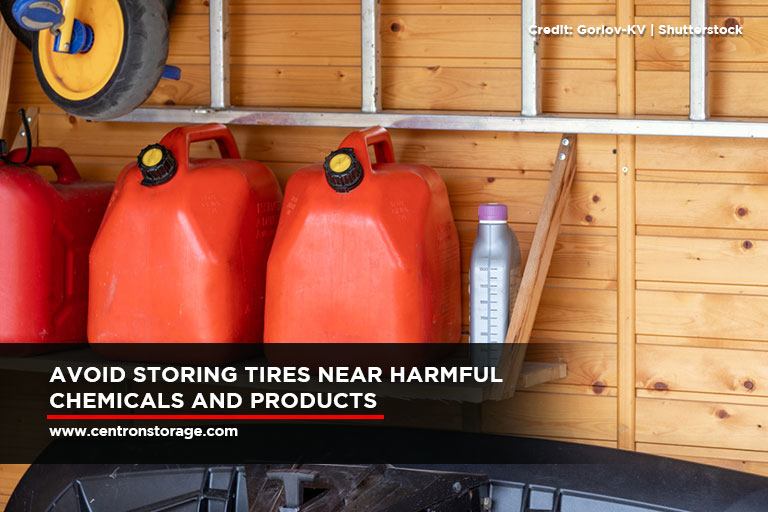
Don’t store tires in places near battery welding equipment, and electric motors, like furnaces, water heaters, central vacuums, generators, or a sump pump in the basement. These engines could create and emit tiny amounts of ozone, which isn’t good for tires in storage.
Exposure to hazardous materials and chemicals, such as petroleum-based products, gasoline or oil, and other solvents, can damage the weathering agents in rubber, causing premature cracking.
- Stack the tires properly
You generally have three options:- Stored upright.
- Laid flat on top of each other
- Hanged on hooks or wall mount tire rack
The proper way to store tires is normally based on whether your tires are still mounted on the rims or have been removed from the wheel before storage.
- How to Store Tires Mounted on Rims/Wheels
The best way to store mounted tires is with hooks into the rim. This removes the weight from the tire and lowers the possibility of the tire resting on a single flex point. Alternatively, you can stack them vertically next to each other. Unmounted tires should never be hung since they will deform and be damaged. - How To Store Tires Without Rims
Unmounted tires should be stacked sidewall to sidewall to avoid staining; white sidewall tires should be stacked white sidewall to white sidewall or placed individually in bags to avoid staining. It’s also preferable to set the tires on top of a piece of wood or another barrier rather than on the ground or concrete. This will help prevent excessive moisture from accumulating on the tires.
In either case, try to rotate their position every 4 weeks to help alleviate pressure on the other tires or the rim.
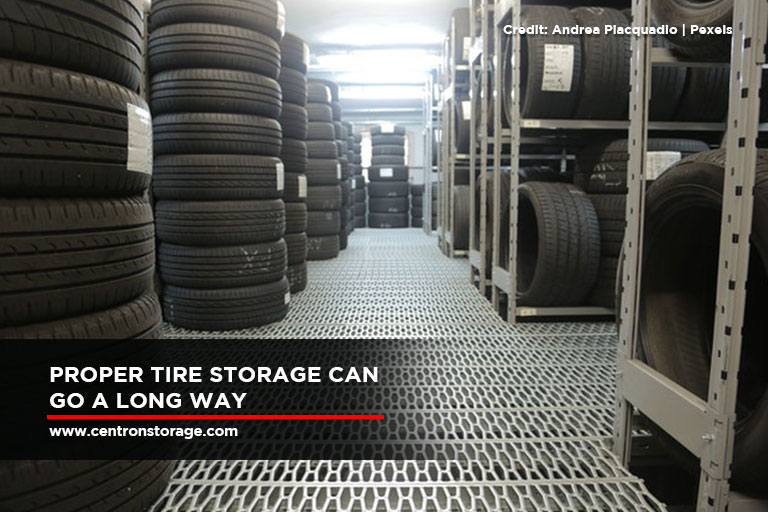
Tires are delicate objects, but a little tender loving care may go a long way. Although appropriate car tire storage may appear to be complicated, following these simple storage best practices and keeping an eye out for potential threats will help your spare set of tires last as long as possible.
Entrust your tires to Centron Self Storage. We offer clean and secure storage units in North York. Reserve yours now by calling us at (416) 739-0000!
